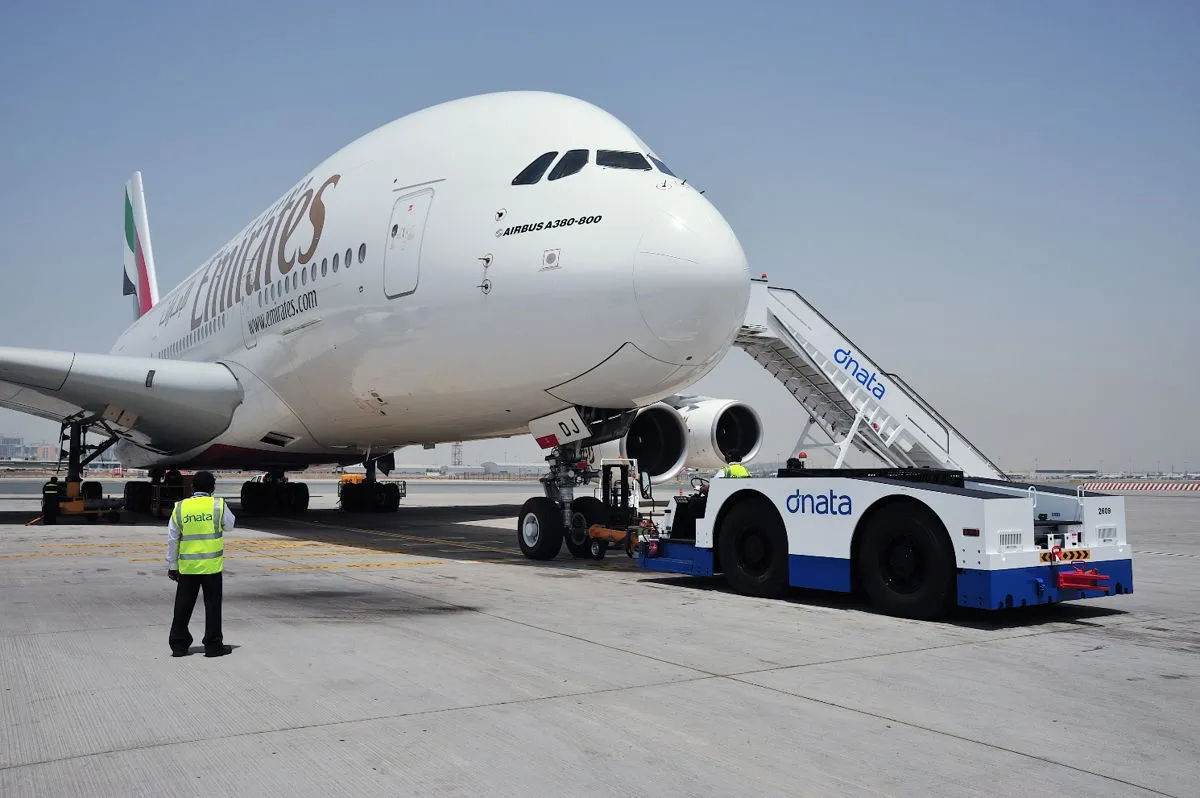
Emirates full fleet of 123 A380s back by 2022.
Nov 26, 2020

By 2022, Emirates had established itself as the world's largest operator of the Airbus A380, boasting a remarkable fleet of 123 superjumbo jets. This impressive collection of aircraft is renowned for its spacious cabins, luxurious amenities, and advanced technology, making it a favorite among travelers. Emirates' A380s feature multiple classes, including opulent private suites and a unique onboard lounge, enhancing the overall flying experience. The airline continues to leverage the A380's capacity and efficiency to connect major global destinations, reinforcing its reputation for excellence in service and innovation in the aviation industry.
The Emirates airline, known for its luxurious services and extensive global network, has made headlines once again by reinstating its full fleet of 123 Airbus A380s by the year 2022. This impressive achievement not only underscores the airline's commitment to providing exceptional travel experiences but also highlights the enduring popularity of the Airbus A380 in commercial aviation. With its spacious cabins and state-of-the-art amenities, the A380 continues to be a favorite among passengers. This article will delve into the significance of this milestone, the features of the A380, and how it impacts the airline industry.
Significance of the Emirates A380 Fleet Return
The return of the full fleet marks a significant recovery for Emirates following the challenges posed by the COVID-19 pandemic. After a period of reduced operations and temporary grounding of aircraft, the airline has successfully navigated the complexities of the aviation industry to bring back its A380 fleet. This resurgence is a positive sign for air travel and signals a rebound in passenger demand.
Here are some key points regarding the significance of Emirates’ full fleet return:
- Passenger Demand: The reinstatement of the A380s indicates a robust recovery in passenger demand, particularly for long-haul flights.
- Operational Efficiency: The A380 is known for its fuel efficiency per passenger, making it a cost-effective choice for airlines.
- Luxury Travel: Emirates has built its brand around luxury, and the A380’s spacious cabins and premium offerings align perfectly with this image.
Features of the Airbus A380
The Airbus A380 is the world's largest passenger aircraft, and it comes with a variety of features that enhance the travel experience. Emirates has customized its A380s to include numerous amenities that cater to the needs of its passengers. Here are some standout features:
| Feature | Description |
|---|---|
| Spacious Cabins | The A380 offers more cabin space than any other aircraft, allowing for wider seats and more legroom. |
| Onboard Lounge | Emirates provides a unique onboard lounge for premium passengers, complete with a bar and seating area. |
| Shower Spas | First-class passengers can enjoy luxurious shower spas, a feature unique to Emirates on the A380. |
| In-Flight Entertainment | The A380 is equipped with the latest in-flight entertainment system, ICE, offering hundreds of channels of movies, music, and games. |
Impact on the Airline Industry
The return of Emirates’ full fleet of A380s has implications beyond just the airline itself. It signals a broader trend within the aviation industry, as airlines around the world assess their fleets and operational strategies in light of changing travel patterns and consumer preferences.
Key impacts include:
- Increased Competition: With Emirates back at full capacity, other airlines may feel pressure to enhance their own offerings to compete, particularly on popular routes.
- Revitalization of Major Hubs: The A380 primarily services major international airports, and its return can help revitalize these hubs, increasing traffic and revenue.
- Environmental Considerations: As airlines focus on sustainability, the A380’s efficiency can contribute to lower emissions per passenger, promoting a greener approach to air travel.
The Future of the A380 and Emirates
Looking ahead, the future of the Airbus A380 remains promising, especially with Emirates leading the way. While some airlines have retired their A380 fleets, Emirates’ decision to bring back all 123 aircraft demonstrates a strong belief in the aircraft's viability in the long term.
As travel continues to recover, Emirates is positioned to leverage its A380 fleet to meet increasing passenger demand. The airline's innovative approach to cabin design and service will likely keep it at the forefront of the aviation industry.
Conclusion
The return of Emirates’ full fleet of 123 A380s is a significant milestone for the airline and the aviation industry as a whole. With its luxurious features and capacity to accommodate large numbers of passengers efficiently, the A380 is set to play a crucial role in the recovery of international travel. As Emirates continues to redefine air travel excellence, the A380 will undoubtedly remain a key component of its strategy, ensuring that passengers experience the best that flying has to offer.
Related Articles

Explore Thailand: The Best Islands to Visit for Paradise, Adventure, and Relaxation

The Ultimate Guide to the Best Islands in Thailand for Your Next Getaway

Do babies need passports? How to get a passport for a newborn

How to get a U.S. passport fast: here’s how to expedite the process

What is Mobile Passport Control: 5 reasons why you should use it

SENTRI vs. Global Entry: A detailed guide

Do you need a passport to go to the Bahamas? Let’s find out

Do you need a passport to go to Mexico? A detailed guide

Do you need a passport to go to Canada? We got the answer

Do You Need a Passport for a Cruise: An Essential Travel Guide

Booster Seat Requirements: All the Rules to Follow in Your Rental Car

What Are the World’s Most Powerful Passports, and How Does Yours Rank?

How to Take a Passport Photo at Home: A Helpful Guide

You've got to have heart! Southwest's new livery

Your opinion: Should water be free on low cost carriers?

Young women bolder than guys as solo travellers
